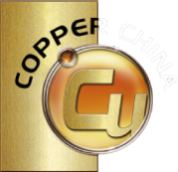Copper foil: The key material to help lithium ion battery performance leap
In the critical period of today's energy transformation, lithium-ion batteries, as an important energy storage equipment, are widely used in many fields such as
electric vehicles and electronic equipment. In the complex structure of lithium-ion batteries, copper foil, as an indispensable key material, is promoting the continuous improvement of lithium-ion battery performance by virtue of its unique performance advantages, bringing new changes to the field of energy storage and application.
The conductivity of copper foil: the guarantee of efficient transmission of electric
energy
The charge and discharge process of lithium-ion batteries relies on the rapid transfer of electrons between the electrode and the external circuit, in which copper foil plays a key role in current conduction. Copper foil has an extremely low resistivity, which allows electrons to move smoothly in it, minimizing the loss of electrical energy during transmission. At the negative end of a lithium-ion battery, the copper foil acts as a fluid collector, responsible for collecting and conducting the electrons that escape from the negative material, ensuring that the current can be efficiently transmitted to the external circuit. This excellent conductivity allows lithium-ion batteries to achieve fast charging and discharging, improving the power density of the battery. For example, in the fast charging scenario of electric vehicles, lithium-ion batteries using high-quality copper foil can be charged in a shorter time, greatly improving the convenience of electric vehicles.
Stability: To ensure the long-term stable operation of the battery
In the use of lithium-ion batteries, the battery will undergo complex electrochemical reactions and temperature changes, which puts high requirements on the stability of battery materials. Copper foil has excellent chemical stability and thermal stability. In terms of chemical stability, the copper foil can remain stable in the electrolyte environment inside the battery, and it is not easy to react chemically with the electrolyte, thus ensuring the safety and reliability of the battery. Even after long-term use, the copper foil can maintain its physical and chemical properties, ensuring that the performance of the battery will not be affected by changes in fluid collection.
In terms of thermal stability, copper foil is able to maintain good performance within a certain temperature range. When the lithium ion battery generates heat during the charging and discharging process, the copper foil can effectively conduct heat and avoid the occurrence of local overheating. This not only helps to maintain the temperature balance inside the battery, but also prevents battery performance degradation and even safety problems caused by excessive temperature. Good thermal stability makes the lithium-ion battery can maintain relatively stable performance under different ambient temperatures, and broadens the application scenario of the battery.
Application of copper foil: Deep battery core components
In the manufacture of lithium-ion batteries, copper foil is mainly used in the negative collector fluid. Its precise design and layout in the negative electrode is
crucial for the improvement of battery performance. The surface quality and thickness uniformity of the copper foil directly affect the contact performance between the negative electrode material and the copper foil. High quality copper foil has a smooth surface and uniform thickness, which can ensure that the negative material is uniformly attached to the copper foil and form a good electrical contact. This helps to improve the charging and discharging efficiency and cycle life of the battery.
At the same time, with the continuous development of lithium-ion battery technology, the performance requirements for copper foil are also increasing. For example, in the research and development of lithium-ion batteries with high energy density, thinner and stronger copper foils need to be used. Thinner copper foils can reduce the weight and volume of the battery and improve the energy density of the battery; The high-strength copper foil can ensure that there is no rupture or deformation during the manufacturing and use of the battery, ensuring the reliability of the battery.
Environmental protection and sustainable development
Copper foil, as a recyclable material, has significant advantages in terms of environmental protection and sustainability. With the continuous expansion of the lithium-ion battery market, the recycling and disposal of waste batteries has become an important topic. The recyclability of copper foil makes the copper resources in waste batteries can be effectively recovered and reused. Through the professional recycling process, the waste copper foil can be reprocessed into
high-quality copper foil products, which can be used again in the manufacturing of lithium-ion batteries. This not only reduces the exploitation of primary copper resources, reduces energy consumption, but also reduces the potential pollution of waste batteries to the environment, providing strong support for the sustainable development of the lithium-ion battery industry.
Copper foil as a key material in lithium-ion batteries, with its excellent
conductivity, stability and important applications in battery components, is becoming the core force to promote the performance of lithium-ion batteries leap. It not only improves the performance and reliability of lithium-ion batteries, but also conforms to the concept of environmental protection and sustainable development. With the continuous progress of science and technology and the continuous development of the lithium-ion battery industry, the application prospect of copper foil will be broader, which is expected to bring more innovation and breakthroughs in the field of energy storage and application, and help the realization of the global energy transformation and sustainable development goals.
